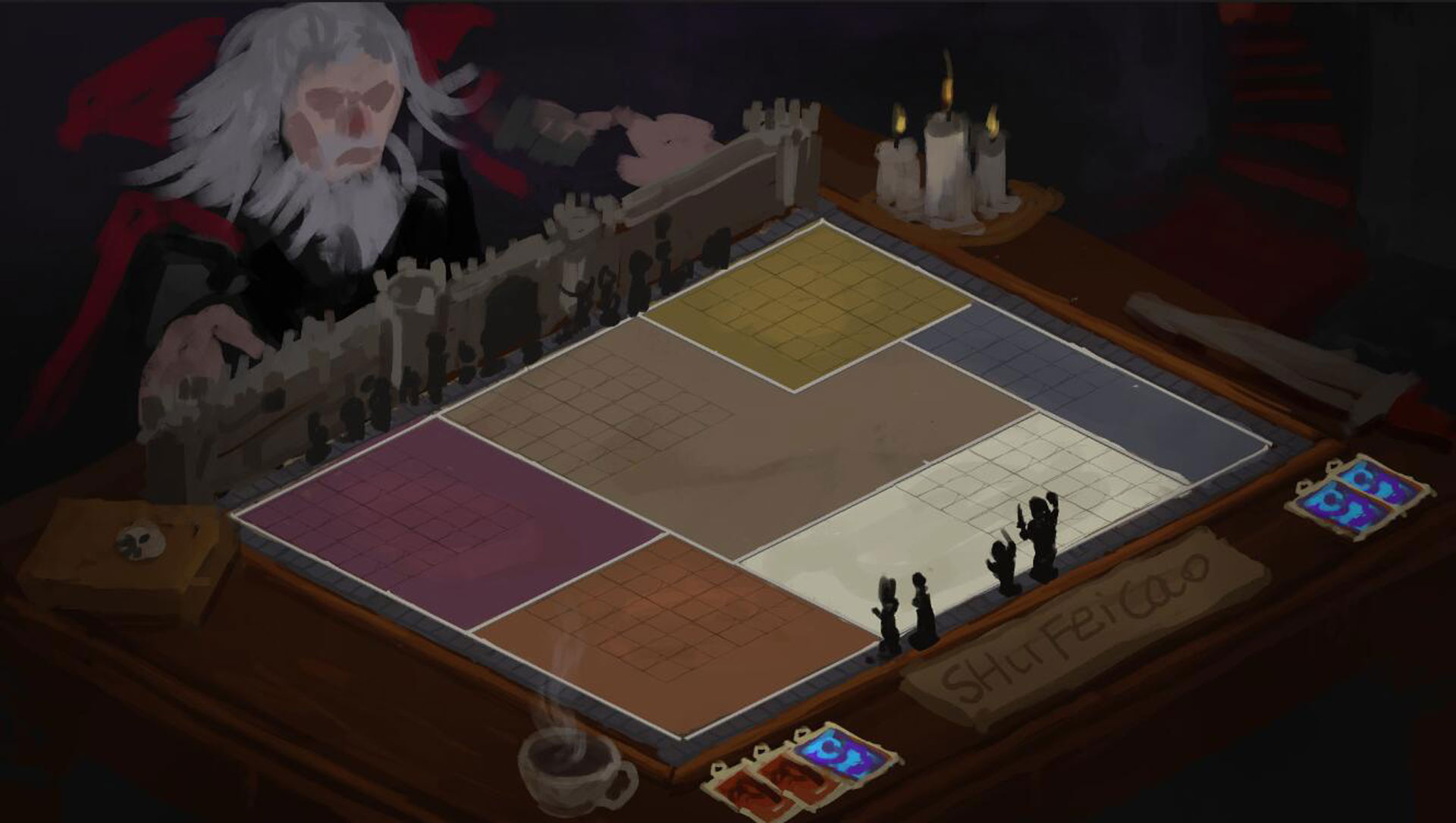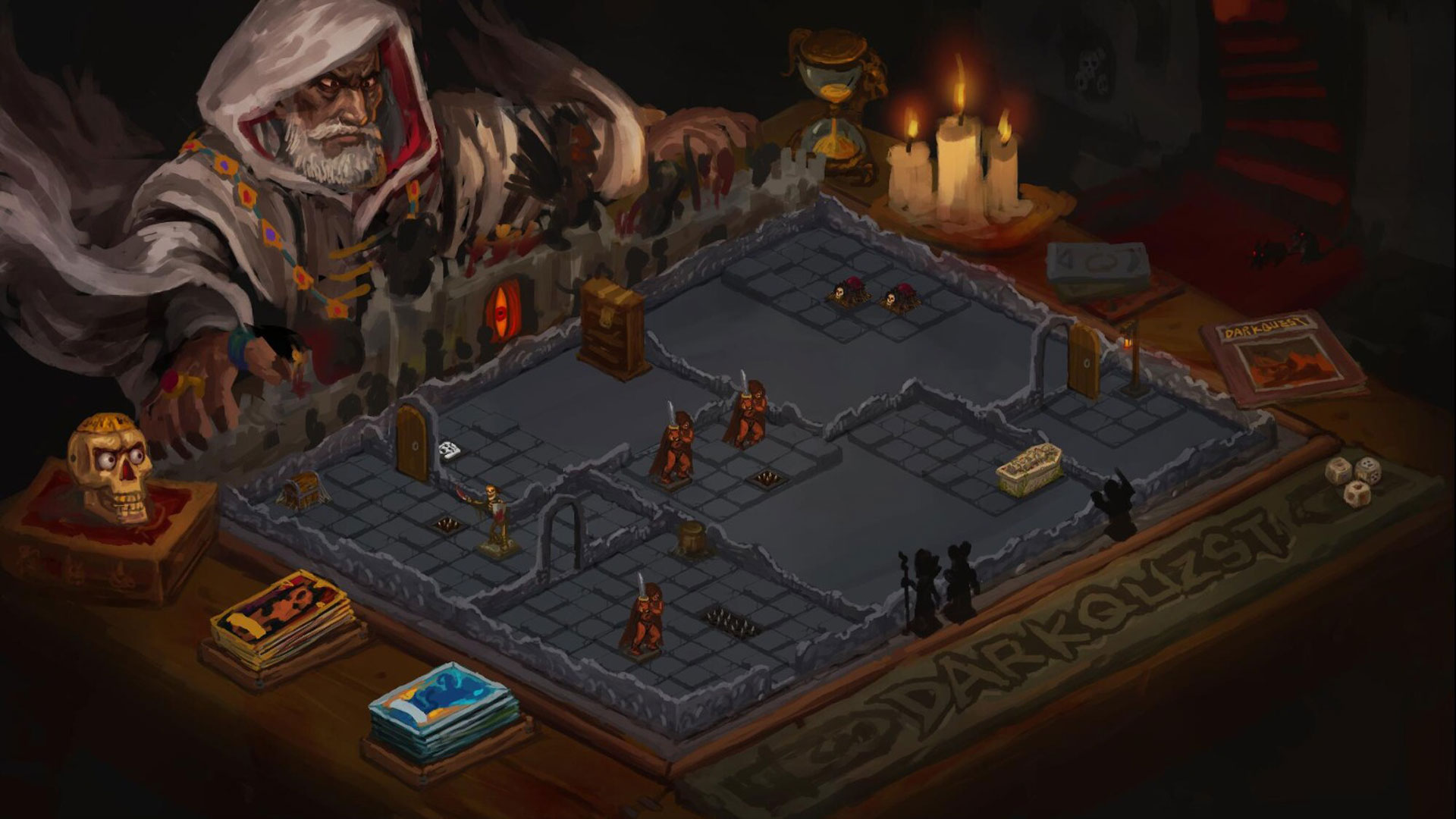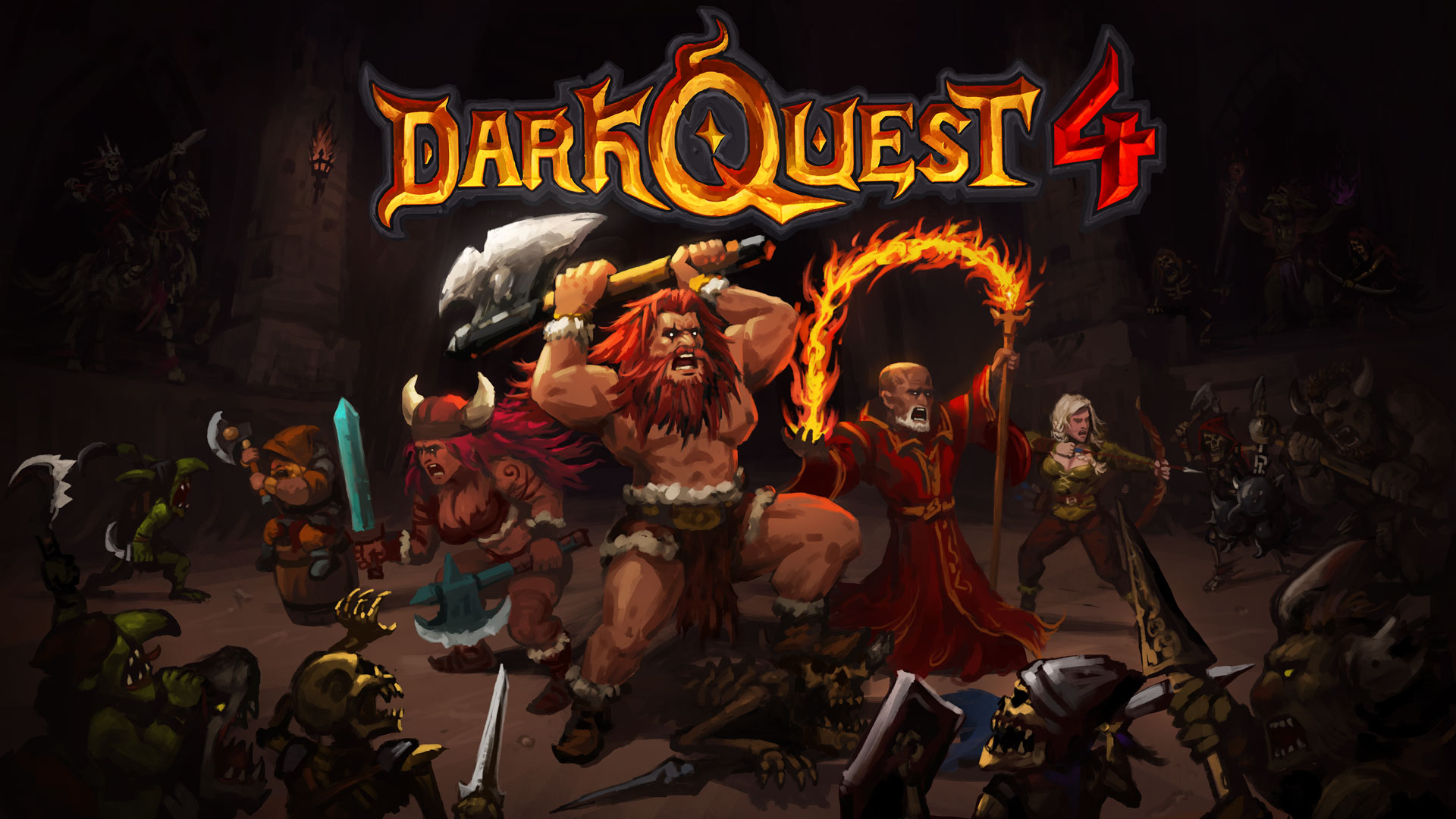From Idea to Reality
As with all Dark Quest games, the starting point for Dark Quest 4 was Hero Quest – a game I’ve been a fan of for years – and this entry set out to keep that board-game aesthetic intact. We’ve always loved the idea of a party of heroes setting out to explore a dungeon, uncover its secrets, and smite some monsters along the way. This time we deliberately preserved the room-by-room exploration that defines the feel of Hero Quest, but removed the tedious board-game tasks, like managing dice, that slow the experience down. We took those core concepts – the rooms, the exploration, the decisions – and built them into a video game, which allowed us to push past the limitations of the tabletop and create something that feels familiar yet far more immediate.

Designing Around the Unknown
The Challenge of Scale
As mentioned before, we wanted to keep the idea of rooms and exploration at the heart of the experience. We also wanted each quest to last long enough to feel immersive but never become drawn-out. Early on, we experimented with larger maps to give players more content and variety, but it quickly became clear that the hero was too small on screen, details were getting lost, and it was harder to see clearly and focus on the strategy. That’s when we realized we needed to scale things down.
Working at a smaller scale in a tile-based world, however, brought its own challenges. Much of the playable space is taken up by walls, doors, and other structures, which limited the sense of openness we wanted. On top of that, the isometric perspective, while offering a nice view, always has angles that obscure parts of the scene. Finding the right balance between visibility, scale, and the feeling of exploration ended up being one of the trickiest and most important parts of development.

Hidden Threats
Traps posed a separate problem. In previous designs, traps were invisible. On a first playthrough, there was no way for you to know where traps were, which could be frustrating. Hinting at traps could help, but once you decoded the pattern, the suspense was gone. Worse, invisible traps could disrupt the gameplay – a carefully planned turn could be ruined by an unexpected trap, which didn’t encourage strategic thinking or thoughtful planning.
Hero Variety Challenge
With ten available heroes, each with different playstyles, we discovered that both players and even the development team tended not to switch between heroes frequently. This meant that much of the potential for experimenting with different party compositions and strategies was being underutilized.
Making it Work
Once we understood these challenges, the team began designing solutions that preserved exploration, strategy, and variety while keeping the gameplay clear and engaging.
Exploring New Heights
To address the challenges we faced with scale and visibility, we split each quest into multiple floors. Moving between floors via staircases, entering new and undiscovered levels with limited visibility, recreated that sense of venturing into the unknown while keeping the hero and environment clear.
We also maintained thematic consistency across floors — for example, if players encountered mummies on the first floor, it was likely they would face more mummies supported by additional monsters on subsequent floors. This approach helped players anticipate and prepare for encounters while preserving the feeling of discovery.
Quest descriptions and notes were used to hint at upcoming encounters, giving you more context and the ability to plan ahead.
Traps as Strategy
Traps were redesigned to support strategic thinking rather than disrupt it. By placing visible traps in front of closed doors or treasures, you could now make calculated choices: proceed and risk the trap, or find another approach. Falling into a trap during combat became a deliberate decision, a strategic sacrifice, rather than an unfair interruption to gameplay.
Rotating the Party
To motivate players to experiment with different heroes, we implemented a system simulating exhaustion and “death.” Continuous use of a hero, or their death in a previous quest, reduces their starting health in the next quest, while leaving a hero unused for a few quests increases their starting health. This encourages rotation and keeps each party composition feeling fresh.
Bringing it All Together
Now that we had solved what each quest would contain, it was time to build the campaign. We blended in a narrative that progresses throughout the game, giving you a clear sense of motive and immersion as you move from quest to quest.
At the Hero Camp, you can buy cards and manage your heroes’ progression, tracking growth and preparing for upcoming challenges. The camp serves as the central hub where strategy, preparation, and story intersect.

Dark Quest 4 also supports couch co-op on Xbox, letting friends join the adventure together. Exploring dungeons, facing traps, and coordinating your party alongside others brings the social excitement of a board game into the video game space. Dark Quest 4 is available now on Xbox.
Dark Quest 4
Brain Seal Ltd
Dark Quest returns with its fourth installment – a turn-based strategy adventure inspired by the legendary HeroQuest board game. Enter a realm of perilous dungeons, cunning traps, and powerful magic as you lead your party of heroes against the forces of the Dark Sorcerer.
Gulak, the sorcerer’s puppet, commands monstrous legions that stalk the night. Villagers vanish without a trace – stolen in silence, never to be seen again. Only your band of champions can stand against this tide of darkness and end Gulak’s reign of terror.
-Build Your Party of Heroes-
Command up to 10 unique heroes, each with distinctive stats and powers. Train them in the Hero Camp, unlock new cards and abilities, and forge your perfect dungeon-delving team.
-Strategic Dungeon Adventures-
Embark on 30 handcrafted quests filled with tactical, turn-based combat and deadly surprises. Outsmart over 40 unique monsters, evade lethal traps, and wield both magic and steel to survive sprawling, multi-floored dungeons that test your wit and courage.
-Local Coop-
Team up with friends locally in couch co-op, combining your heroes’ strengths to overcome Gulak’s legions together. Coordination is key – one false move could doom you all.
-Customize Your Experience-
Play your way with custom difficulty settings, and countless strategic combinations that make every run feel unique and rewarding.
The post Creating Dark Quest 4: The Making of a Modern Dark Fantasy Adventure appeared first on Xbox Wire.


